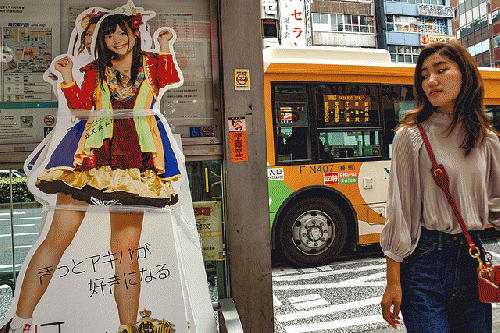We landed in darkness. The last time I was in Narita was 18 years earlier. With a six-hour layover, I inexplicably didn't leave the airport. "Can I possibly die without at least a glimpse of Japan?" I'd ask myself, cringing.
Finally, I was there. My first impressions were the generous legroom on the train to Tokyo, sterile apartment buildings somewhat reminiscent of Singapore, subway cars packed with standing, black-suited salarymen then, at Nippori Station, a commanding middle-aged executive, sheathed in an expensive suit, staggering drunk. Everyone else on the platform stood so straight and rigid, I also noticed, as if contrapposto was banned. In Vietnam, few can stand for more than a few seconds without leaning on something or collapsing into a squat.
My maternal great-grandfather, Ngo Thuc Dinh, was one of the top officials in the pro-Japanese Vietnamese government of World War II, and for this collaboration, he was targeted for assassination by the Communists. Unable to do this, they killed my grandfather instead. This incident didn't just change how my mother was raised, but my emotional makeup.
My father owned a Japanese restaurant in Santa Clara, CA. Its cooks were Mexicans and Vietnamese, however, with only one Japanese ever employed, right at the beginning, to teach the rest the basics, then he was, ah, fired. Among Kobe's decorations was a Turkish serving plate, bought at a flea market.
"This is clearly not Japanese, dad."
"It's close enough. No one will know." To be so slapdash and careless is typically Vietnamese, I'm sorry to say.
Young, I saw The Voluptuous Horror of Karen Black. Fronted by Kembra Pfahler, it's a cathartic band of half-naked, weirdly-painted women, with a Japanese drummer who walked around, even before the show, in a bottomless leather pants. Even at my most rebellious, I never had such balls.
My wife and I booked a small yet very efficient apartment in Nihonbashi, the financial district. For the first time, I experienced a heated toilet seat and a jet of water aimed at my exit. What impressed me most, though, was a mini-sink built into the water tank, so as it was being refilled, I could wash my hands.
Some people aren't meant to travel, for the unexpected will alarm or infuriate them. They simply can't stomach the fact that the aim of traveling is to be refuted, disorientated or, if one's very lucky, deranged. For an entire day, my wife stayed inside to watch a Vietnamese TV movie on YouTube.
As Europeans roamed and conquered, East Asians turned hermetic. From 1405 to 1433, the Chinese arrayed an unprecedented armada to explore the world, then they stopped voyaging, banned the building of large ships and outlawed seafaring. There was nothing beyond the waves but trifles and Japanese dwarf pirates, wokou. Smug, the Chinese sank themselves.
Initially open to whites, Japan's rulers then saw the Christian missionaries as deforming and dividing their society, thus began 220 years of isolation. With his suck-on-this black ships and two white flags as gifts, Admiral Perry changed all that, and once Japan decided it had no choice but to compete with whites, it systematically and energetically proceeded to deform itself, a process that hasn't stopped.
Genpei Akasegawa (1937-2014) was an artist who documented Tokyo architectural components that had become useless. Not demolished, they're often even maintained or fixed, as in the railing of a wooden staircase leading nowhere. These instances of found art, Akasegawa dubbed Thomasson, after the American baseball player. Though signed to the biggest Nippon League contract ever, Gary Thomasson was a strikeout machine as the cleanup hitter for the Yomiuri Giants. Serving no purpose, Thomasson became art, as it were. A recurrent Dada nightmare, Thomasson was nicknamed the "Giant Human Fan."
The beauty (and sadness) of Thomassons is that they represent the nearly obliterated past, and walking around Tokyo, I couldn't help but feel, constantly, that the entire city was a gorgeous and glittering tomb over a scorched and pulverized Japan.
41 km2 of Tokyo were obliterated by American bombs, as compared to 6.5 km2 of Dresden, by British and US planes. Killing 100,000 mostly civilian Tokyoites over two days, Operation Meeting House is still the most destructive bombing raid in history.
(Note: You can view every article as one long page if you sign up as an Advocate Member, or higher).






